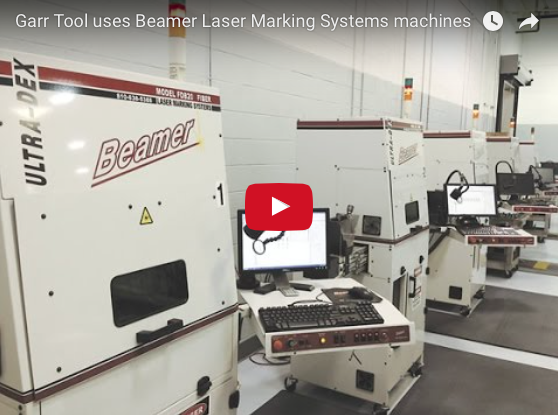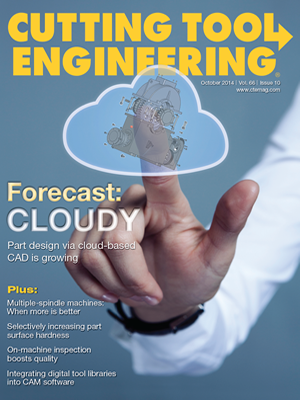
END USER: Garr Tool Co., (800) 248-9003, www.garrtool.com. CHALLENGE: Increase uptime for lamp-pump laser marking machines by reducing equipment maintenance and downtime. SOLUTION: Fiber diode-pump laser marking machines. SOLUTION PROVIDER: Beamer Laser Marking Systems, (810) 638-5388, www.beamerlasermarking.com.

Most cutting tools are not complete without a “finishing touch”—marking. Garr Tool Co. laser marks more than two million solid-carbide endmills a year with the toolmaker’s logo, catalog number, batch number and a brief description, noted Ray Melow, inventory manager for the Alma, Mich., toolmaker.
Garr Tool previously used four 70w lamp-pump laser marking machines. They etched tools effectively, but required an operator to manually load and unload each tool after the production process. In addition, maintenance requirements were increasing, especially for the two machines the company bought used, and each machine was down once or twice a year. Garr Tool stocked spare standard parts but a typical repair took 2 days, and one that involved a major component, such as a power supply, took longer.
“A machine would be down for 2 weeks because we had to overnight ship it to California, have it repaired and fly it back,” Melow said. “We had four machines to make sure we always had two and a half to three running. They were just kind of maintenance babies.”
While the company was experiencing these problems, a sales representative from Ultra-Dex Tooling Systems, Flushing, Mich., approached Garr Tool about the fiber diode-pump laser marking machines from its Beamer Laser Marking Systems division. “They said they’re marking carbide with 10w of power on these diode-pumped machines,” Melow said. “We thought, ‘Oh, you’re nuts. It must go really slow.’ ”

VIDEO

Nonetheless, about 5 years later, when Garr Tool knew it had to start replacing its manual marking systems, it researched suppliers and reached out to Beamer. “We were so impressed and they were so close by,” Melow said.
Since 2008, Garr Tool has purchased six Beamer machines, four of which are automated, except for an operator setting up the format. The other two are manual systems for small-quantity production runs and blueprint specials. Beamer customized each machine based on its blank sizes.
For three of the automated machines, Melow explained that the tool blanks are marked prior to production to avoid the risk of edge chipping when feeding a tool into a carousel and stacking it after marking. Garr Tool marks the tools in batches from 50 to 500, enabling faster marking than the previous method while reducing labor requirements. “One person can run two if not three machines in the right circumstances,” he said.
The other automated machine is integrated with an automated packaging system, where tools ½"×3" (12.7mm × 76.2mm) and larger are marked after production. A robot loads each one into a package before closing, sealing and labeling it. “That’s new territory for us and it’s been successful,” Melow said.
Compared to Garr Tool’s older packaging machines, which are manually loaded, the completely automated one uses an improved plastic packaging material that’s less brittle and protects the dense, heavy carbide tools from breakage if dropped, he added.
Unlike the lamp-pump lasers, the toolmaker’s diode-pump lasers are air-cooled so they do not require a water chiller. This reduces energy consumption, cutting the operating cost by nearly half, according to Melow.
In addition, the fiber lasers penetrate the carbide surface more efficiently to create a “cleaner” mark. “The other machines were only able to put out a lightly polished etch,” he said.
However, Garr Tool had to make an adjustment and slightly reduce the power setting on the new machines because etching was raising a bead, Melow said. “It was microscopic, but it was there.” After the adjustment, the machines produced marks to specification.



